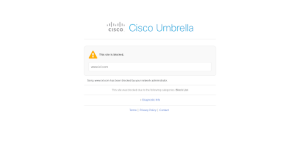AR: Encouraging or Limiting Reading?
As a student reads throughout the school year, they are expected to choose books based on the requirements Accelerated Reader places in different titles. And, to many, the program has proved to limit reading.
February 3, 2020
Throughout classrooms at Day Creek Intermediate, students are constantly facing deadlines – and Accelerated Reader always seems to one of them. The program carries a negative reputation among students as it enforces a concept that today’s generation typically shies away from – reading.
Accelerated Reader, commonly referred to as AR, is a digital program that schools use to track each student’s reading progress. Students begin by taking a quiz to assess their reading ZPD, or Zone of Proximal Development. The ZPD identifies the level of book each student should read. Once a book is chosen and read, students take short quizzes for their books reflecting plot, characters, etc. The higher the score, the more points that are given, which all contribute toward a goal for the school year. However, some students feel that these aspects of AR are more detrimental than beneficial.
“[I feel limited by Accelerated Reader] especially because it’s mainly about the goals and points and not the actual reading itself,” seventh-grader Rebekkah C says.
Undoubtedly, reading is an important aspect of learning. A program like Accelerated Reader should encourage students to read, as it offers rewards for reading books in general. Though these rewards vary by school, they may include parties, bragging rights, treats, or the simple satisfaction of adding an ‘A’ to the gradebook. However, the AR requirements and labels placed on books, in the form of points and levels, limit students to stories included within AR’s measuring system, foregoing anything outside of the program that students might be interested in. Additionally, the majority of classrooms at Day Creek Intermediate have minimum point requirements for AR.
“It’s good to have [goals] and to always try to achieve them, but sometimes it’s a little hectic having to keep up with them. It hasn’t necessarily increased my interest in reading, but it forces me to read more,” said Aja C., a 7th grade student.
It is likely that countless students who have used the Accelerated Reader program have had to ignore certain books because there weren’t enough points offered to reach a teacher’s requirement. Or the reading level associated with a student’s choice didn’t contribute enough toward their overall goal. Both problems may discourage kids from reading some of their first choices at the library.
According to Accelerated Reader, points are based on word count. However, students may benefit more through the actual material, not the length of the book. This is another major defect with the program, focusing too little on the depth of the actual content.
Additionally, the quizzes are simply based on reading comprehension, without any further analysis or evaluation. According to Reading Rockets, “The purpose of reading is comprehension — getting meaning from written text.” Having at least a few questions aside from what is explicitly stated in the book could better serve the purpose of true reading. Teachers always encourage students to “read between the lines,” but if the school’s program doesn’t build on this skill, should students be expected to develop the concept?
Overall, Accelerated Reader makes do, forcing students to read to some extent. However, there are several issues with the application, those that just may defeat the purpose of reading altogether, shifting the focus from enjoying the actual material. Whether a new program is necessary or not, changes in AR’s questions could greatly affect students’ willingness to read, while highlighting the skills needed to develop as a young reader.






